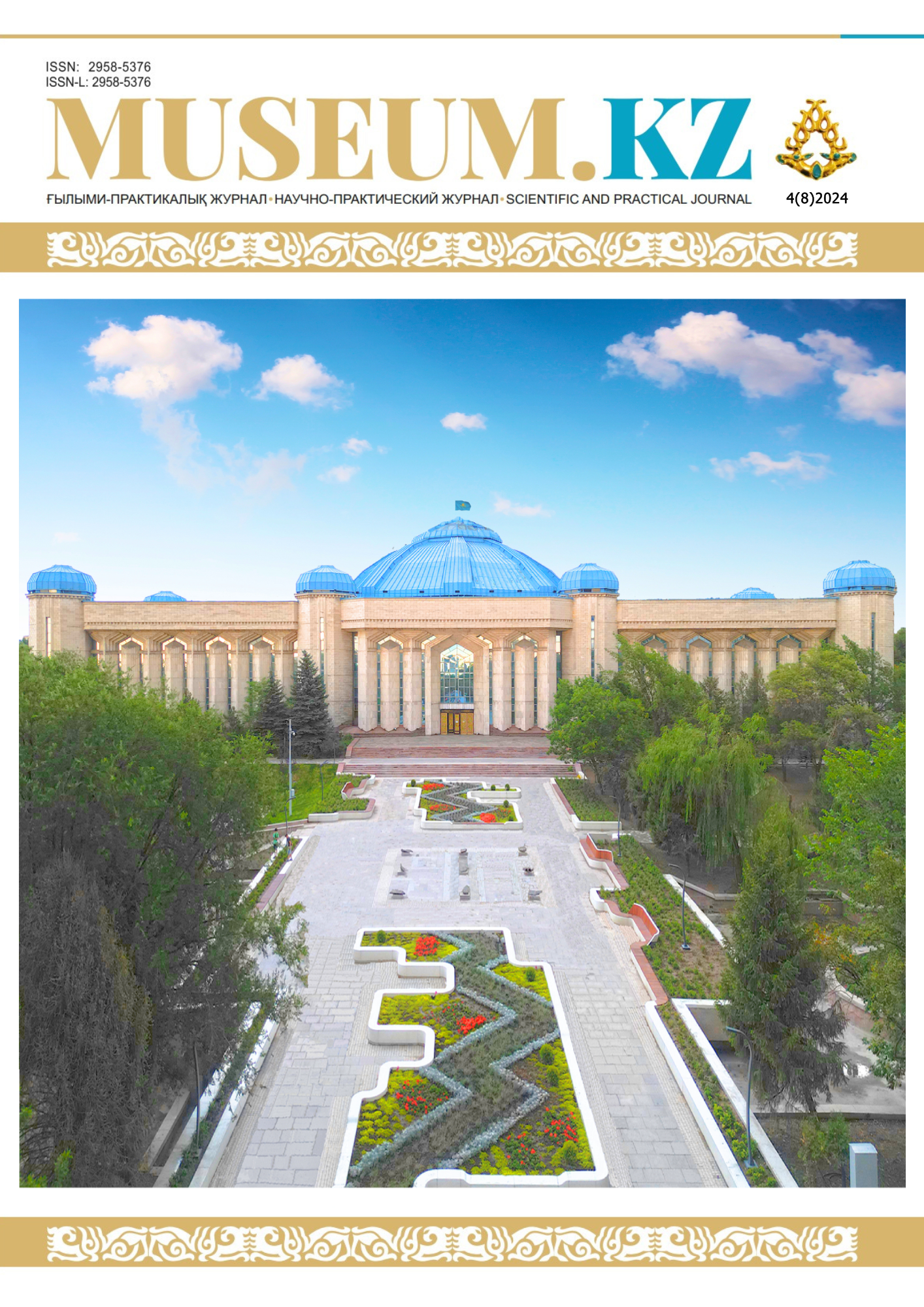STONE TOOLS (NUCLEUS) OF THE PALEOLITHIC ERA IN MANGYSTAU
DOI:
https://doi.org/10.59103/muzkz.2024.08.02Keywords:
Mangistau, Stone Age, history, archeology, Paleolithic, core, expedition, Ustyurt, Shakpak-ata, geology, weaponsAbstract
Abstract. The article is devoted to the Paleolithic stone tools (nuclei) of the Mangistau region. Many of them are stored in the funds of the regional history and local history museum. The author suggests that the nuclei found during archaeological research belong to the middle and late Paleolithic of Mangistau. The common feature of more than five thousand nuclei found at the Shebir site and transferred to the museum collection is an oval shape. The breadth of the scope of application of this tool suggests that it is a reflection of the level of human consciousness. Due to the geographical location of the Mangistau region, natural features in most cases have a great impact on the good preservation of historical and archaeological monuments. It can be said that the degree of study of Paleolithic artifacts in the region is significantly lower than the Middle and Late Stone Age. However, this situation does not mean that the history of the population of Mangistau cannot be traced back to the Stone Age. On the contrary, a deeper study of the Middle and Late Stone Age stimulates interest in the Paleolithic, where signs of life were earlier. Despite the fact that the discovery of Paleolithic cores in Mangistau is a great archaeological success, the degree of their study remains low.
The cores found in the 60s of the last century were collected by geological research expeditions during the USSR. These materials will allow in the future to implement research projects covering all the collected information, to analyze them, supplement and correct them. The large number of cores found makes it possible to assume that "primitive people appeared in Mangistau 1 million years ago."







